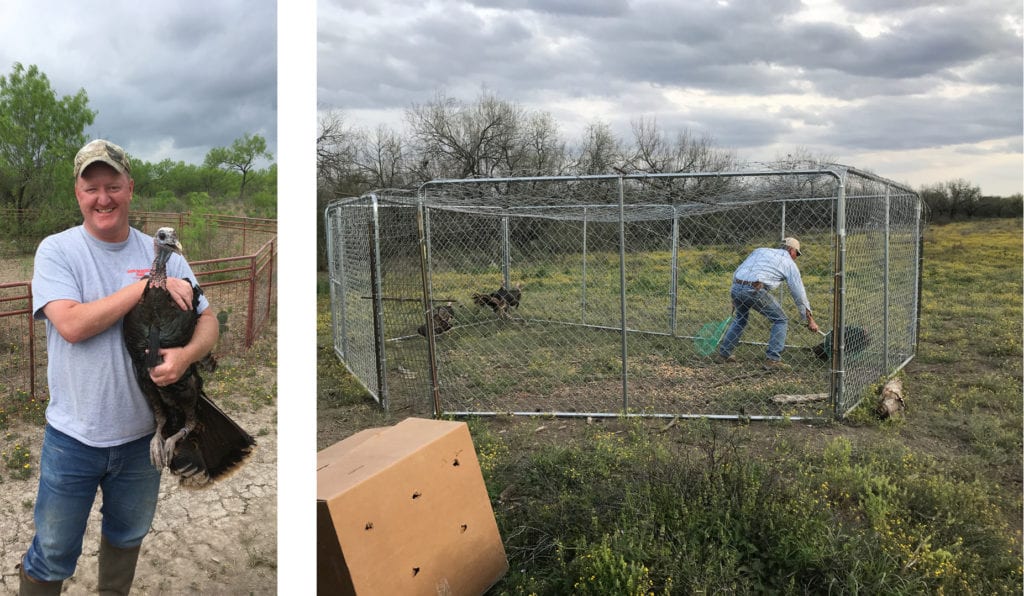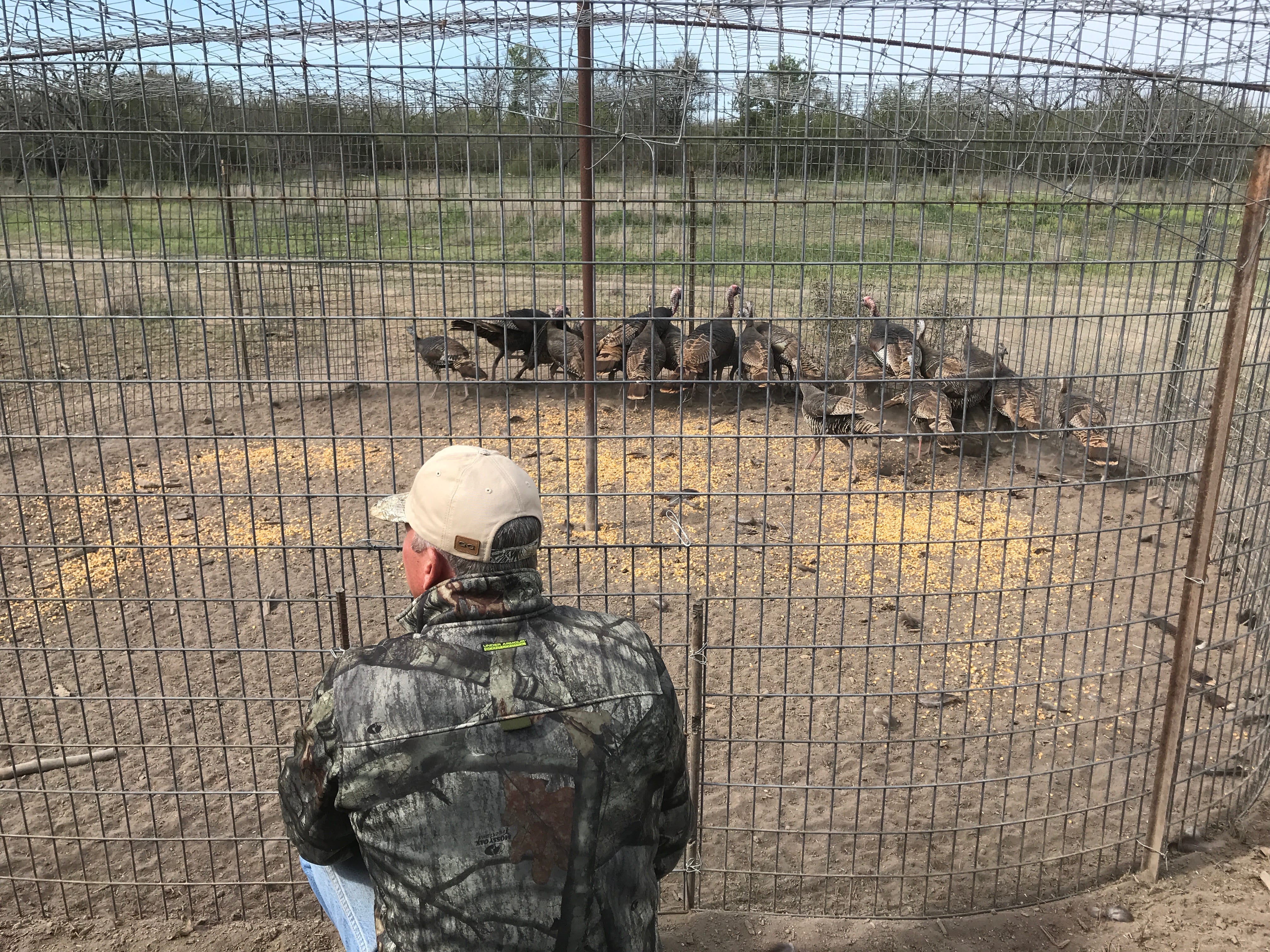First TTT permits issued for private landowners
A LaSalle County ranch had a problem. Its deer hunters would get into the blind, and just as deer were stepping out, here they came.
Rio Grande turkeys, number- ing up to 200 would hustle to the feeder, gobbling up all of the corn in a matter of minutes.
The deer, not liking all of the movement and noise, moved back into the brush.
This problem, becoming less uncommon, can be addressed. Macy Ledbetter, a wildlife biologist with Spring Creek Outdoors, completed the first TTT (Trap, Transport and Transplant) Rio Grande turkey relocations on private lands last year and this year.
“They had never issued a per- mit to a private individual until last year,” Ledbetter said. “This year, we did two of them.”
While netting the turkeys is permitted, Ledbetter prefers a walk-in trap.
“It’s like a retrofitted hog trap,” he said. “We prebait it for weeks. Then, before daylight, we’ll re- bait it and set it. Then, around 9 a.m., we go into the trap and catch the birds with a dip net and transport them in a box.”
Ledbetter just completed a transport of 50 Rio Grande turkeys from LaSalle County to western Dimmit County.

“That area is generally known for deer, not turkey,” he said. “The release site is getting 50 birds. Only 15 are males, and half of the birds are juveniles, so the bulk of the males are jakes and 2-year-old gobblers — it’s to set up the area for future production.”
Demand for the process isn’t a problem, Ledbetter said.
“We have lots of clients that want to get rid of some turkeys,” he said. “A group of 200 can mess up a deer hunt. And we have oth- ers that want them.”
Management practices used for deer often work to build turkey numbers on a ranch.
“Some of the deer management is improving the edge effect that turkey prefer,” Ledbetter said. “Added grasslands, water sources, predator control, supplemental feeding and food plots all im- prove the situation. As we man- age for deer, we are inadvertently managing for turkey — many of the practices are the same as if you were managing for turkey.”
The release site on Spring Creek’s recent transport made a number of efforts to help build a turkey population once the birds arrive.
“They built tall, multi-layered artificial roosts, created a lot of water by building ponds and lakes and set up turkey feeders,” he said. “The birds should do well there.”
Texas Parks and Wildlife Department regulations allow movement of Rio Grande turkey with an approved TTT permit. Ap- plications include the trap site information, release site information along with a Wildlife Management Plan approved by a TPWD biologist, and information on the method of trapping.
Jason Hardin, TPWD’s turkey program leader, said moving Rio Grande turkeys is rare in the state.
“About 95 percent of suitable habitat is occupied, but there are still some pockets that can take more turkeys,” he said. “The trap site has to be large enough so it won’t impact the neighbors’ populations, and we recommend the release site be at least 2,000 acres.”
The birds can be moved between Oct. 1 and March 15.
“February and March is the prime time to catch them,” Ledbetter said.


